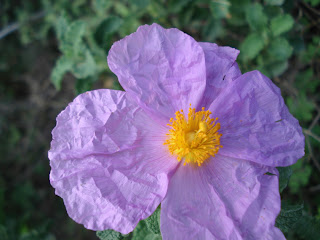 |
| The word "Chypre" is French for Cyprus. |
Chypre is the French for Cyprus and comes from when the Crusader's invaded in the 13th century and brought back a material called labdanum from the sticky buds of the Cistus bush. It has a heavy, sweet, balsamic type of odour but when blended with other base notes like sandalwood, patchouli and oakmoss, made a very popular base. You need to allow at least 10-15 minutes after application to appreciate the similarity between perfumes in this group, since "Chypre" describes the "main-theme" or "base" of the perfume which you will not appreciate until the solvent and top notes have had time to evaporate.
Chypre perfumes tend to be fairly heavy fragrances and therefore last a reasonable time on the skin. Sometimes described as evening type perfumes, or "sophisticated". Our fragrances in this group are Cymbelline for the ladies and Amber for men.
François Coty (3 May 1874, Ajaccio, Corsica – 25 July 1934, Louveciennes)
 |
| Frenchman Monsieur François Spoturno, known as François Coty. |
He began by selling essences derived from flowers in Grasse, and then peddled his scents to the barbers of Paris. His genius, however, was in marketing and in recognizing that the bottle made the perfume. He had bottles designed by the great ceramist René Lalique. His first great successes were his Rose Jacqueminot scent, in a bottle by Baccarat, in 1904 and L'Origan in 1905. One of Coty's greatest success, Chypre (1917), gave its name to an entire fragrance family used in the industry's classifications
_____________________________________________________
Chypre Perfume -- Basic Accord
3 ounces
bergamot essential oil
1.5 ounces oakmoss absolute
1 ounce lime essence essential oil
3/4 ounce labdanum "amber note" absolute




